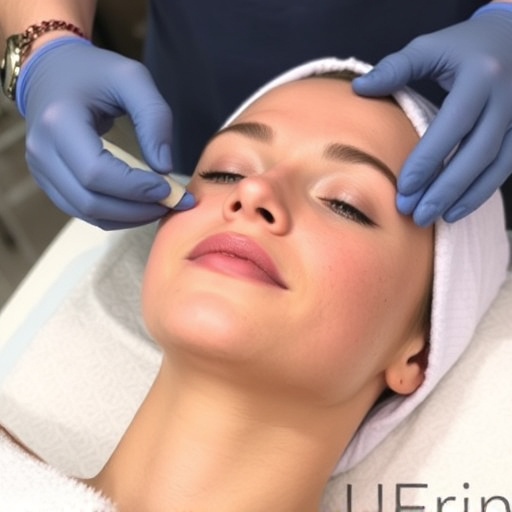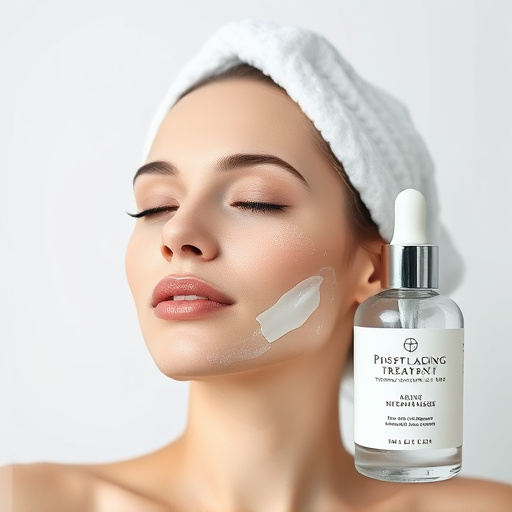Melasma treatment involves addressing causes like sun exposure and hormonal changes through skincare solutions. Options range from topical creams to laser therapy, tailored to skin type and severity. Personalized care, including consultations with dermatologists or estheticians, is key for effective melasma management.
Melasma, often referred to as ‘mask of pregnancy,’ is a common skin condition characterized by discolored patches on the face. This article guides you through the journey of understanding and treating melasma effectively. We explore its causes, from hormonal fluctuations to sun exposure, and delve into various treatment options, including topical creams and advanced laser therapies. Learn how to personalize your skincare routine to choose the ideal melasma treatment tailored to your needs.
- Understanding Melasma: Causes and Triggers
- Exploring Treatment Options: Topical Creams to Laser Therapy
- Personalized Care: Factors for Choosing Your Ideal Melasma Treatment
Understanding Melasma: Causes and Triggers

Melasma, often referred to as the “mask of pregnancy,” is a common skin condition characterized by dark patches on the face, typically appearing on the forehead, cheeks, and upper lip. While it can affect anyone, women are more prone to developing melasma during pregnancy or due to hormonal fluctuations. Understanding its causes and triggers is an essential step in choosing the right melasma treatment.
Several factors contribute to melasma, including sun exposure, hormonal changes, certain medications, and stress. Prolonged or intense sunlight can trigger the overproduction of melanin, leading to darker skin patches. Hormonal shifts during pregnancy or menopause may also cause melasma. Additionally, medical conditions like thyroid disorders or specific medications, such as oral contraceptives, can be contributing factors. Customized facials and aesthetic treatments offered at medical spas can help address these underlying causes by providing targeted skincare solutions and protecting the skin from further damage.
Exploring Treatment Options: Topical Creams to Laser Therapy

Melasma treatment offers a range of options tailored to different skin types and preferences. One of the most common and accessible melasma treatment approaches is topical creams. These products contain active ingredients like hydroquinone, retinoids, or kojic acid that help lighten dark patches on the face. Topical creams are often the first line of defense in melasma management, offering a non-invasive way to enhance skin brightening efforts.
For those seeking more advanced options, laser therapy presents a powerful alternative. Intense pulsed light (IPL) and fractional laser treatments target melanin production, breaking up pigmented spots and improving overall skin health. While these procedures might be pricier and require professional administration, they offer dramatic results for severe cases of melasma. The right melasma treatment choice depends on individual needs, skin sensitivity, and the severity of hyperpigmentation.
Personalized Care: Factors for Choosing Your Ideal Melasma Treatment

When considering melasma treatment options, it’s crucial to understand that personalized care is key to achieving optimal results. Every individual’s skin is unique, and factors like skin type, severity of melasma, and personal preferences play a significant role in selecting the ideal treatment approach. For instance, some people may benefit more from topical creams and sun protection strategies, while others might require more invasive procedures like chemical peels or microneedling therapy.
Aesthetic treatments at medical spas can offer advanced solutions such as laser therapy or intense pulsed light (IPL) treatments, which target pigmented spots specifically. Consulting with a dermatologist or skilled esthetician is essential to evaluate your specific needs. They can guide you through various melasma treatment options, including microneedling therapy, and help tailor a skincare plan that addresses the root causes of your condition, ensuring the best possible outcome for your skin.
Choosing the right melasma treatment involves understanding your skin’s unique needs and triggers. By exploring various options from topical creams to laser therapy, considering factors like skin type, severity, and lifestyle, you can make an informed decision for personalized care. Remember, consistent management and tailored solutions are key to effectively addressing melasma.














